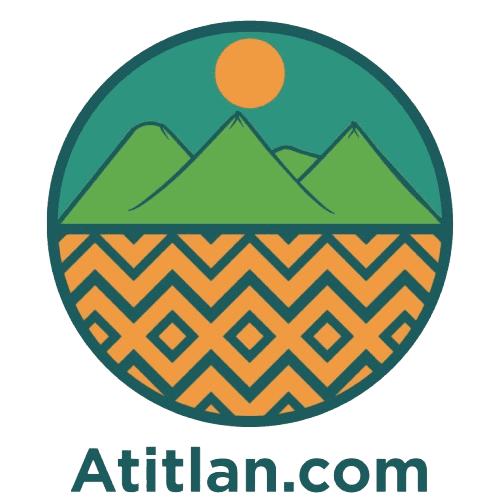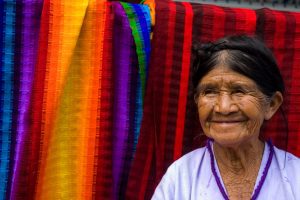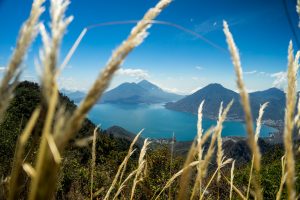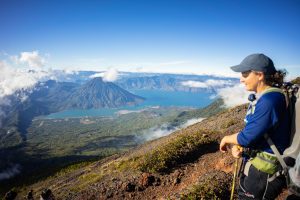As a member of the Lake Atitlán Rotary Club and treasurer on our board, I get asked about bringing Rotary groups to Guatemala fairly often: Is it safe? What projects can we visit? Can spouses come? How do we make it meaningful, not just tourism?
Lake Atitlán offers something rare for Rotary clubs: authentic project visits, genuine fellowship in a stunning location, and connection with a thriving local Rotary club deeply embedded in community development. This isn’t a surface-level volunteer vacation. It’s an opportunity to see Rotary’s impact while experiencing one of Central America’s most beautiful destinations—making it an ideal choice for Rotary Fellowship Trips in Guatemala.
Why Lake Atitlán Works for Rotary Fellowship Trips
Lake Atitlán sits in Guatemala’s western highlands, surrounded by three volcanoes and a dozen Mayan villages. The landscape is spectacular, and what makes it even more valuable for Rotarians is the concentration of meaningful, ongoing Rotary service trips Guatemala participants can visit, learn from, and support.
Our Lake Atitlán Rotary Club currently has eight active Global Grant projects. These aren’t historical partnerships — they’re real, ongoing Lake Atitlán Rotary projects your club can tour. Water systems in multiple villages, maternal health programs at Hospitalito Atitlán, education initiatives, and reforestation collaborations with NGOs like Wellkind Guatemala. The scale makes this region ideal for impactful Rotary club travel fellowship experiences.
The fellowship aspect works naturally. Lake Atitlán has infrastructure that makes hosting groups straightforward with comfortable accommodations, reliable transportation, excellent restaurants, and bilingual guides. Groups of 6-12 (typical for international Rotary trips) are easy to manage. Spouses are welcome and find plenty to enjoy.
Plus, you’re connecting with a local Rotary club that wants to host you. We love showing international Rotarians what’s happening here, and relationships often outlast the trip itself.

Active Rotary Projects You Can Visit
Hospitalito Atitlán – Maternal Health & Blood Bank
Hospitalito Atitlán in Santiago is a private non-profit hospital serving 100,000 people on Lake Atitlán’s southern shore, predominantly Tz’utujil Maya. It’s the only 24/7 emergency surgical and obstetrical facility within a two-hour radius.
Multiple Rotary clubs have supported Hospitalito through Global Grants, including recent maternal and neonatal health improvements. Most recently, Rotary partnerships helped establish a blood bank—critical because the hospital previously depended entirely on outside blood supplies. When emergency cesareans or trauma cases came in at night, blood simply wasn’t available.
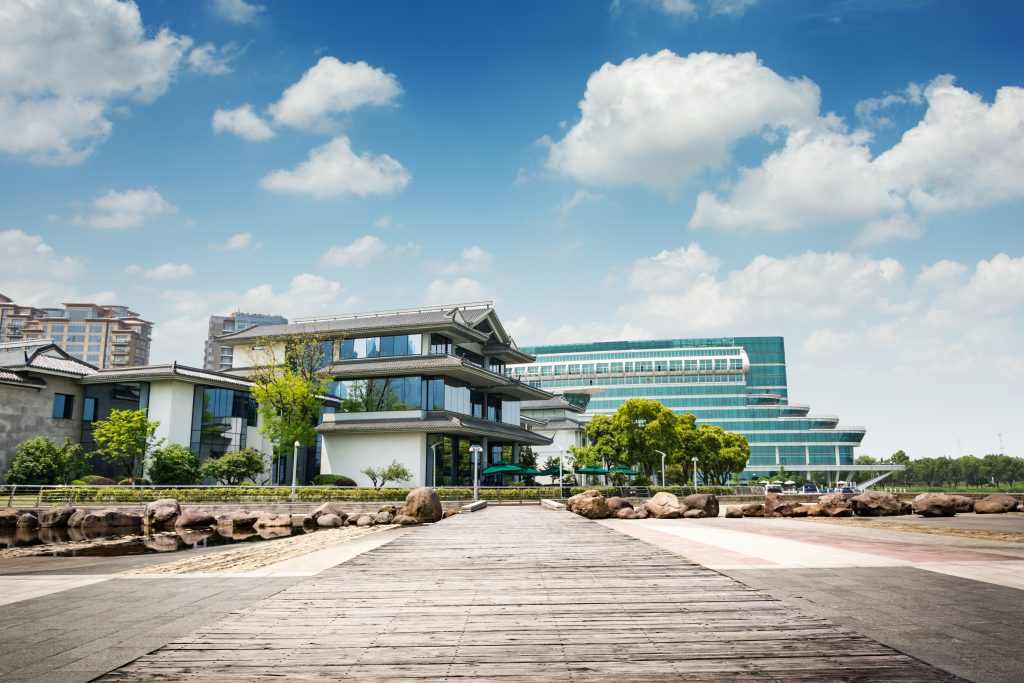
When Rotary groups visit, hospital administrators provide tours showing how Global Grant funds translate to lives saved. You’ll see the blood bank, surgical suites, and maternal health ward. You’ll meet local Guatemalan physicians and nurses. The impact becomes tangible.
The hospital welcomes discussions about future partnerships. If your club is considering health-focused Global Grants, Hospitalito has proven capacity and genuine ongoing needs.
Village Water Access Projects
Clean water access remains challenging in Lake Atitlán communities. Rotary clubs have addressed this through filtration systems, spring protection, and water distribution infrastructure across multiple villages.
These projects work well for visits because the scale is comprehensible. You’re seeing household filtration systems families maintain, or spring enclosures protecting community water sources. The connection between Rotary funding and daily impact is direct.
Village visits typically include meeting water committees who manage systems. You’ll hear from families about how clean water changed their children’s health. These conversations provide perspective on development work that is rare in tourist Guatemala.
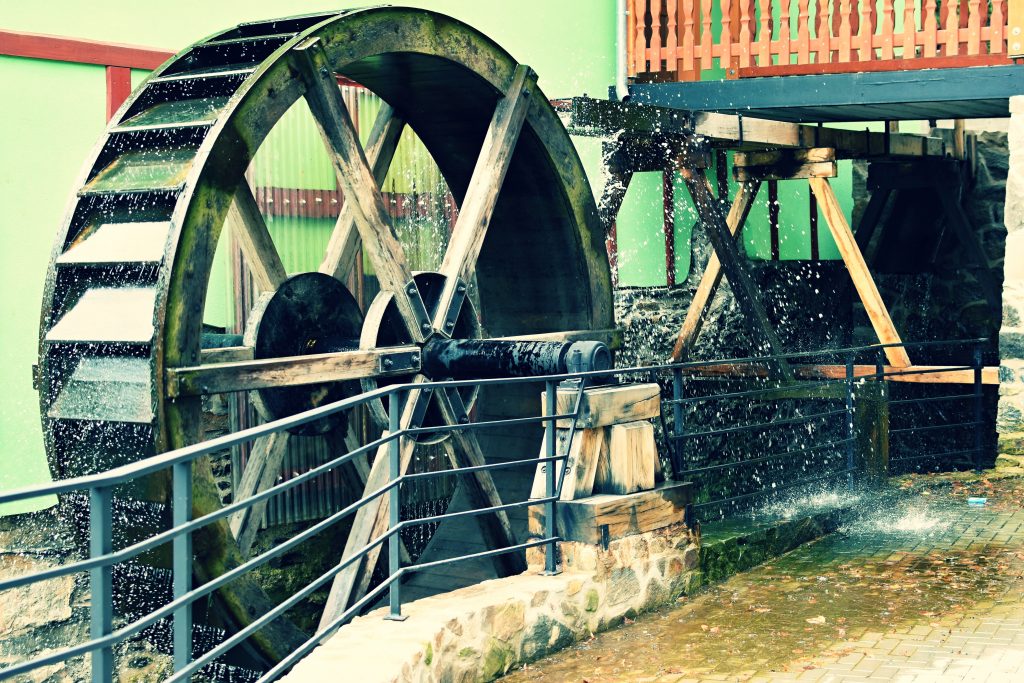
Education & Literacy Initiatives
Lake Atitlán Rotary Club has worked on computer donations to schools in Santiago Atitlán and surrounding communities, including the David LaMotte School. Basic education and literacy is one of Rotary’s seven areas of focus, and computer literacy is essential now.
Education project visits show both achievements and challenges. Schools in indigenous communities often lack resources taken for granted elsewhere—reliable electricity, internet, and well-trained teachers. Rotary support provides computers, but sustainability requires ongoing training and maintenance.
These visits work particularly well for Rotarians involved in vocational training or literacy projects at home.

Environmental Work with Wellkind Guatemala
Wellkind Guatemala, a local environmental NGO, runs sophisticated reforestation programs addressing Lake Atitlán’s watershed challenges. While not exclusively Rotary-funded, the organization has partnered with clubs and represents well-managed local NGOs that make strong Global Grant partners.
They’re planting over 100,000 trees annually in watershed areas critical for water quality and spring recharge. The work is science-based—hydrological analysis identifies where forest cover matters most.
Fellowship groups can visit tree nurseries where women’s cooperatives grow seedlings, tour reforestation sites showing multi-year progress, and understand how environmental restoration connects to community economic development. Learn more about sustainable travel and environmental projects at the lake.
What a Typical Rotary Fellowship Trip Looks Like
Most successful trips balance project visits with fellowship activities and cultural immersion. Here’s a structure that works well for 6-12 people over 5-7 days:
Days 1-2: Arrival & Orientation Arrive Guatemala City, shuttle to Lake Atitlán (3-4 hours). Evening welcome dinner with Lake Atitlán Rotary Club members.
Days 3-4: Project Visits Morning visits to Rotary-supported projects. Afternoons for fellowship—boat rides, Santiago market, weaving cooperatives in San Juan. Cultural activities provide context for understanding communities where projects operate.
Day 5: Joint Service Project Many groups want hands-on participation. Options include reforestation planting with Wellkind, health clinics, and specific project tasks. The key is working alongside locals, not doing for them.
Day 6: Fellowship & Free Time Hiking for adventurous members. Spanish immersion. Shopping. Kayaking. These activities build group bonds and create memories beyond service.
Day 7: Departure Morning departure with optional Antigua stop before afternoon flight home.
This structure provides substance without exhaustion: real projects, local Rotarian connections, Guatemalan culture, and fellowship time.

Planning Details Rotary Clubs Need for Rotary Service Trips Guatemala
Group Size & Composition
Six to twelve people is the sweet spot. Below six, costs per person rise significantly. Above twelve, group dynamics get complicated and project visits feel crowded.
Spouses are absolutely welcome and encouraged. Many successful trips include couples where one spouse is the Rotarian. Fellowship works better when spouses are included, and Lake Atitlán offers enough that non-Rotarians enjoy the experience.
Timeline & Planning
Plan 6-9 months ahead for passports, communication with the Lake Atitlán Rotary Club to coordinate project visits, and scheduling with organizations like Hospitalito.
Our local club needs a few weeks’ notice to arrange project visits. Hospital administrators, village water committees, and school directors all have regular responsibilities. We coordinate so your visit doesn’t disrupt their work.
Costs & Budget
Rotary fellowship trips typically run higher than student travel because accommodations are more comfortable and groups are smaller. Expect $2,500-3,500 per person for 7 days including:
- Round-trip Guatemala City transfers
- Lake Atitlán accommodations (comfortable hotels, private rooms)
- All meals
- Project visit coordination and guides
- Cultural activities
- Meeting arrangements with local Rotary club
- In-country transportation
- Bilingual guides throughout
Not included: International flights ($400-800), travel insurance ($75-150), spending money, optional activities.
Accommodations
For Rotary groups, we recommend mid-range to upscale hotels in Panajachel or Santa Cruz. Panajachel offers the most convenience:
- Porta Hotel del Lago (pool, gardens, conference space, $150-300/night)
- Hotel Atitlán (colonial style, upscale, $200-400/night)
- Casa Palopó (luxury boutique, spectacular views, $400-600/night)
For larger groups (10-12), renting a venue like Bambu Guest House works well—entire property, private meeting space, catered buffet meals.
Safety Considerations
Guatemala’s travel advisories concern many Rotarians. Lake Atitlán’s tourist towns have different risk profiles than Guatemala City gang territories or border regions.
Our Rotary Club members (many international Rotarians who chose to live here) navigate daily life safely. Petty theft exists in crowded areas. Violent crime against tourists is rare. Standard travel precautions apply.
When you’re guests of the local Rotary club, you have support from people who live here year-round and respond immediately to issues.
Connecting with the Lake Atitlán Rotary Club

The fellowship component shines when your club connects meaningfully with our local club. We arrange a joint meeting during your visit. You’ll meet our members (a mix of Guatemalan and international Rotarians living at the lake), hear about projects, and discuss potential collaborations.
These connections often lead to District Grant partnerships, ongoing communication, and future visits. Several international clubs now have “sister club” relationships with Lake Atitlán Rotary stemming from fellowship trips.
We can also facilitate introductions to other Guatemalan Rotary clubs if your group wants broader District 4250 exposure.
Cultural Immersion Beyond Lake Atitlán Rotary Projects
Fellowship trips work best when they balance service exposure with cultural experience.
Santiago Atitlán Market Days (Fridays/Sundays): Santiago is Central America’s largest indigenous village. Market days show Mayan culture thriving with colorful textiles, fresh produce, ceremonial items, and handicrafts. The market serves locals primarily. You’ll see families shopping, vendors negotiating in Tz’utujil, and cultural practices in action.
Weaving Cooperatives in San Juan: Women’s cooperatives produce world-class textiles using traditional backstrap looms and natural dyes. Tours show the complete process from cochineal insects creating red pigment to indigo plants producing blue. These are successful businesses, not charity projects.
Maximón Shrine: Santiago’s Maximón shrine demonstrates Maya-Catholic syncretism. This folk saint receives offerings of alcohol, cigarettes, and prayers in ceremonies blending indigenous and colonial traditions.
Volcano Views and Lake Activities: Morning coffee watching sunrise over the lake. Boat rides with three volcanoes framing every view. The natural beauty creates a memorable space for group bonding. Adventure activities range from gentle to challenging.
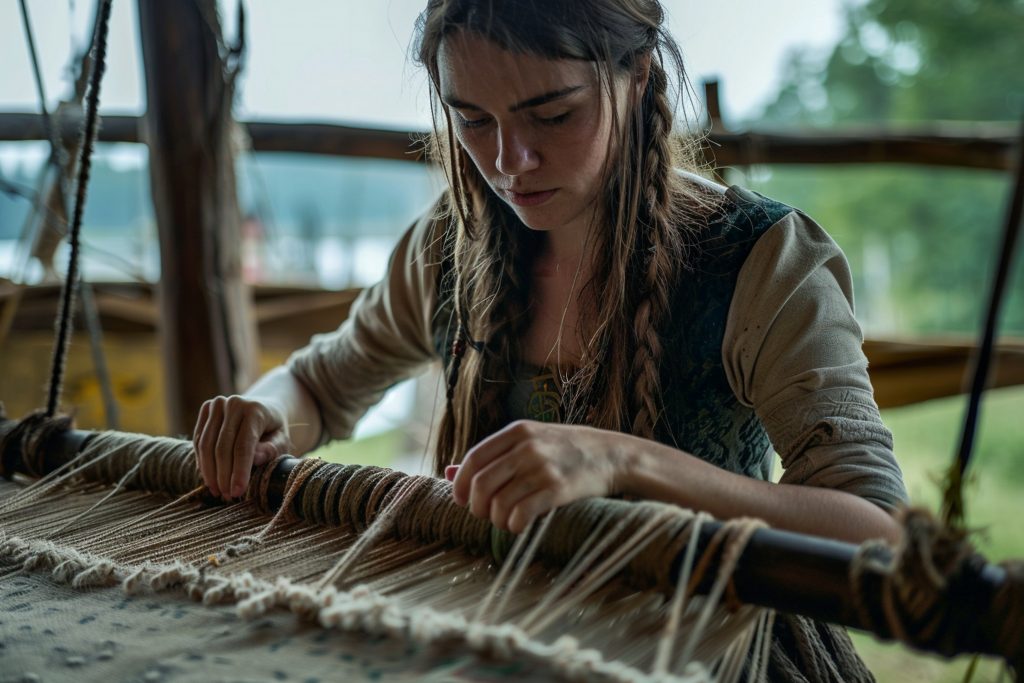
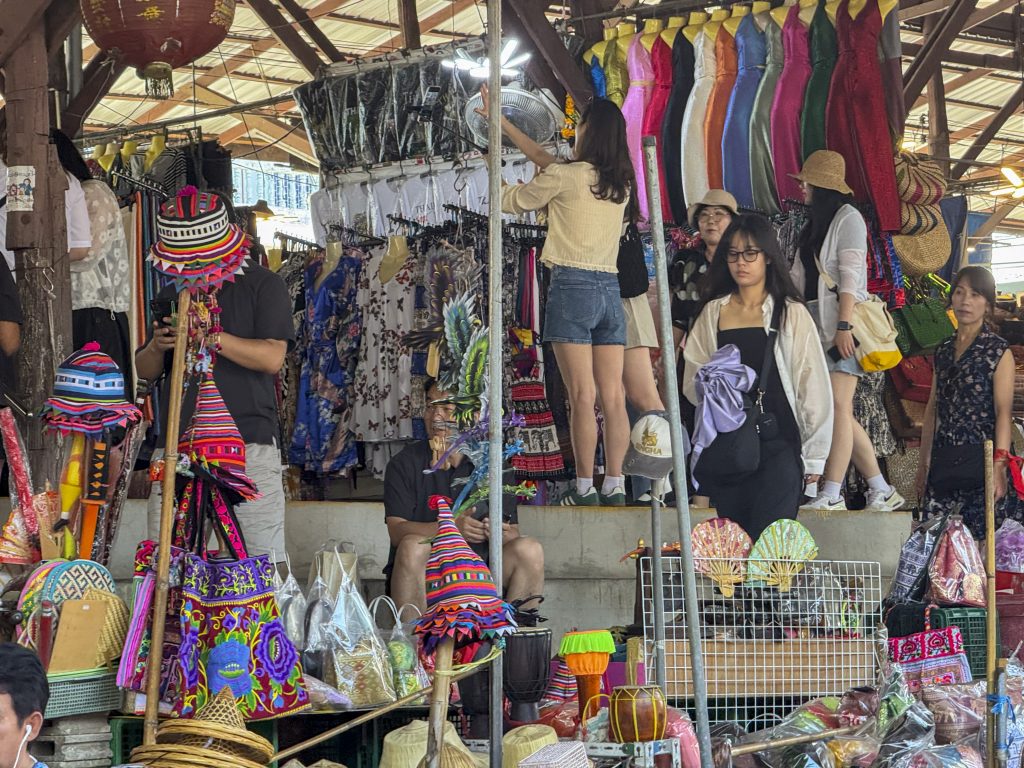


Questions Rotarians Frequently Ask About Lake Atitlán Volunteer Travel
How do we structure giving?
Best practice is coordinating in advance with our Lake Atitlán Rotary Club about where support would be most useful. Some clubs prepare District Grant proposals based on trip findings. Others make direct donations to organizations like Wellkind. The key is avoiding spontaneous commitments to projects you don’t fully understand.
Can we meet with project beneficiaries?
Absolutely. Village water committees share how clean water changed communities. School directors show what computer literacy means for students. Hospital staff explain how equipment improves maternal health outcomes. These conversations provide perspective you can’t get from reports.
Is this appropriate for clubs new to international projects?
Yes. Lake Atitlán works well for clubs exploring international service. The project scale is comprehensible. Our local club guides you through what successful partnerships look like. You’ll leave with a realistic understanding of what international work requires.
What about different activity preferences?
Adventurous members can hike San Pedro Volcano (5-6 hours). Others can kayak, take boat tours, shop, or relax at lakefront cafes. Most days include optional afternoon activities so members choose their own level.
How do we make this valuable for non-Rotarian spouses?
Frame the trip as cultural fellowship, not just Rotary business. Project visits interest everyone when framed as learning about Guatemala development. Cultural activities like weaving cooperatives, markets, volcano views, and traditional meals have broad appeal. Evening fellowship includes spouses fully.
What about continuing support after return?
Many clubs establish ongoing relationships leading to District Grant partnerships, project updates, or future visits. Some clubs adopt specific projects—annual Hospitalito support, village water sponsorship, education funding. The key is sustainable commitment, not one-time transactions.
When’s the best time to visit?
Dry season (November-April) offers the best weather for outdoor activities and project visits. Rainy season (May-October) has afternoon showers but fewer tourists and lower costs.
Making It Happen
If your club is considering a Lake Atitlán fellowship trip, here’s the process:
Step 1: Gauge club interest. You need 6-8 solid commitments for group pricing.
Step 2: Contact operators experienced with Rotary groups. Organizations like Somos Impact Travel understand what Rotarians want: meaningful project exposure, comfortable logistics, fellowship time, and local club connections. Their founder is a Rotarian himself.
Step 3: Coordinate with Lake Atitlán Rotary Club. We’re happy to discuss project visits, schedule meetings, and provide perspective on what’s realistic.
Step 4: Plan 6-9 months ahead for dates, participants, budget, project coordination, travel insurance, passports.
Step 5: Pre-trip preparation. Learn about Guatemala’s history, Rotary’s work in Latin America, and basic cultural context. CDC travel health information provides health guidance.

Why These Trips Matter for Rotary Fellowship Trips in Guatemala
International fellowship trips strengthen clubs in ways domestic meetings can’t. Seeing Rotary’s global impact firsthand reminds members why the work matters. Bonding during a shared adventure creates lasting relationships. Connecting with international Rotarians reinforces our commitment to service above self.

Lake Atitlán offers this opportunity with unusual depth. The concentration of active projects means you’re choosing among meaningful options. The local club’s welcoming culture makes connection natural. The destination provides beauty that makes the journey memorable.
As someone living here, serving as treasurer on Lake Atitlán Rotary Club’s board, I’ve seen these trips transform clubs. Members return energized about Rotary’s mission, committed to international service, and grateful for perspectives gained. That’s the real value not just a week in Guatemala, but renewed dedication to Rotary’s service work everywhere.
For families interested in service travel, Lake Atitlán offers equally powerful experiences. Student groups find educational value in similar community partnerships. Retreat planners discover venues perfect for gathering clubs or districts.
Ready to Plan Your Fellowship Trip?
Contact us to discuss bringing your club to Lake Atitlán. We’ll connect you with Lake Atitlán Rotary Club members, provide project information, and help design a trip that balances service exposure with cultural immersion and fellowship.
Support environmental and community projects
Related Articles
-

Is Lake Atitlán Safe? 2025 Safety Guide for Families, Solo Travelers & Student Groups
-

Lake Atitlán Budget Guide 2025: Complete Cost Breakdown for Travelers
-

Where to Stay in Lake Atitlán: Complete Town-by-Town Accommodation Guide
-

Complete Lake Atitlán Travel Guide 2025: Best Towns, Things to Do & Planning Tips
-

Lake Atitlán for Student Groups: Complete Educational Travel & Service Learning Guide
Rotary Service Projects + Lake Atitlán Travel: Complete Fellowship Guide
Why Lake Atitlán for Rotary Groups
Lake Atitlán sits in Guatemala’s western highlands, surrounded by three volcanoes and a dozen Mayan villages. The landscape is spectacular, and what makes it even more special for Rotarians is the concentration of meaningful, ongoing Rotary work you can actually visit and understand.
Our Lake Atitlán Rotary Club currently has eight active Global Grant projects. These aren’t historical partnerships—they’re live projects your club can tour, learn from, and potentially support. Water systems in multiple villages. Maternal health programs at Hospitalito Atitlán. Education initiatives. Reforestation work through local NGOs like Wellkind Guatemala. The scale and quality creates genuine learning opportunities.
The fellowship aspect works naturally. Lake Atitlán has infrastructure that makes hosting groups straightforward with comfortable accommodations, reliable transportation, excellent restaurants, and bilingual guides. Groups of 6-12 (typical for international Rotary trips) are easy to manage. Spouses are welcome and find plenty to enjoy.
Plus, you’re connecting with a local Rotary club that wants to host you. We love showing international Rotarians what’s happening here, and relationships often outlast the trip itself.
Active Rotary Projects You Can Visit
Hospitalito Atitlán – Maternal Health & Blood Bank
Hospitalito Atitlán in Santiago is a private non-profit hospital serving 100,000 people on Lake Atitlán’s southern shore, predominantly Tz’utujil Maya. It’s the only 24/7 emergency surgical and obstetrical facility within a two-hour radius.
Multiple Rotary clubs have supported Hospitalito through Global Grants, including recent maternal and neonatal health improvements. Most recently, Rotary partnerships helped establish a blood bank—critical because the hospital previously depended entirely on outside blood supplies. When emergency cesareans or trauma cases came in at night, blood simply wasn’t available.
When Rotary groups visit, hospital administrators provide tours showing how Global Grant funds translate to lives saved. You’ll see the blood bank, surgical suites, and maternal health ward. You’ll meet local Guatemalan physicians and nurses. The impact becomes tangible.
The hospital welcomes discussions about future partnerships. If your club is considering health-focused Global Grants, Hospitalito has proven capacity and genuine ongoing needs.
Water Access Projects in Multiple Villages
Clean water access remains challenging in Lake Atitlán communities. Rotary clubs have addressed this through filtration systems, spring protection, and water distribution infrastructure across multiple villages.
These projects work well for visits because the scale is comprehensible. You’re seeing household filtration systems families maintain, or spring enclosures protecting community water sources. The connection between Rotary funding and daily impact is direct.
Village visits typically include meeting water committees who manage systems. You’ll hear from families about how clean water changed their children’s health. These conversations provide perspective on development work that is rare in tourist Guatemala.
Education & Literacy Initiatives
Lake Atitlán Rotary Club has worked on computer donations to schools in Santiago Atitlán and surrounding communities, including the David LaMotte School. Basic education and literacy is one of Rotary’s seven areas of focus, and computer literacy is essential now.
Education project visits show both achievements and challenges. Schools in indigenous communities often lack resources taken for granted elsewhere—reliable electricity, internet, and well-trained teachers. Rotary support provides computers, but sustainability requires ongoing training and maintenance.
These visits work particularly well for Rotarians involved in vocational training or literacy projects at home.
Environmental Work: Reforestation & Watershed Protection
Wellkind Guatemala, a local environmental NGO, runs sophisticated reforestation programs addressing Lake Atitlán’s watershed challenges. While not exclusively Rotary-funded, the organization has partnered with clubs and represents well-managed local NGOs that make strong Global Grant partners.
They’re planting over 100,000 trees annually in watershed areas critical for water quality and spring recharge. The work is science-based—hydrological analysis identifies where forest cover matters most.
Fellowship groups can visit tree nurseries where women’s cooperatives grow seedlings, tour reforestation sites showing multi-year progress, and understand how environmental restoration connects to community economic development. Learn more about sustainable travel and environmental projects at the lake.
What a Typical Rotary Fellowship Trip Looks Like
Most successful trips balance project visits with fellowship activities and cultural immersion. Here’s a structure that works well for 6-12 people over 5-7 days:
Days 1-2: Arrival & Orientation Arrive Guatemala City, shuttle to Lake Atitlán (3-4 hours). Evening welcome dinner with Lake Atitlán Rotary Club members.
Days 3-4: Project Visits Morning visits to Rotary-supported projects. Afternoons for fellowship—boat rides, Santiago market, weaving cooperatives in San Juan. Cultural activities provide context for understanding communities where projects operate.
Day 5: Joint Service Project Many groups want hands-on participation. Options include reforestation planting with Wellkind, health clinics, and specific project tasks. The key is working alongside locals, not doing for them.
Day 6: Fellowship & Free Time Hiking for adventurous members. Spanish immersion. Shopping. Kayaking. These activities build group bonds and create memories beyond service.
Day 7: Departure Morning departure with optional Antigua stop before afternoon flight home.
This structure provides substance without exhaustion: real projects, local Rotarian connections, Guatemalan culture, and fellowship time.
Practical Details for Planning
Group Size & Composition
Six to twelve people is the sweet spot. Below six, costs per person rise significantly. Above twelve, group dynamics get complicated and project visits feel crowded.
Spouses are absolutely welcome and encouraged. Many successful trips include couples where one spouse is the Rotarian. Fellowship works better when spouses are included, and Lake Atitlán offers enough that non-Rotarians enjoy the experience.
Timeline & Planning
Plan 6-9 months ahead for passports, communication with the Lake Atitlán Rotary Club to coordinate project visits, and scheduling with organizations like Hospitalito.
Our local club needs a few weeks’ notice to arrange project visits. Hospital administrators, village water committees, and school directors all have regular responsibilities. We coordinate so your visit doesn’t disrupt their work.
Costs & Budget
Rotary fellowship trips typically run higher than student travel because accommodations are more comfortable and groups are smaller. Expect $2,500-3,500 per person for 7 days including:
- Round-trip Guatemala City transfers
- Lake Atitlán accommodations (comfortable hotels, private rooms)
- All meals
- Project visit coordination and guides
- Cultural activities
- Meeting arrangements with local Rotary club
- In-country transportation
- Bilingual guides throughout
Not included: International flights ($400-800), travel insurance ($75-150), spending money, optional activities.
Accommodations
For Rotary groups, we recommend mid-range to upscale hotels in Panajachel or Santa Cruz. Panajachel offers the most convenience:
- Porta Hotel del Lago (pool, gardens, conference space, $150-300/night)
- Hotel Atitlán (colonial style, upscale, $200-400/night)
- Casa Palopó (luxury boutique, spectacular views, $400-600/night)
For larger groups (10-12), renting a venue like Bambu Guest House works well—entire property, private meeting space, catered buffet meals.
Safety Considerations
Guatemala’s travel advisories concern many Rotarians. Lake Atitlán’s tourist towns have different risk profiles than Guatemala City gang territories or border regions.
Our Rotary Club members (many international Rotarians who chose to live here) navigate daily life safely. Petty theft exists in crowded areas. Violent crime against tourists is rare. Standard travel precautions apply.
When you’re guests of the local Rotary club, you have support from people who live here year-round and respond immediately to issues.
Connecting with Lake Atitlán Rotary Club
The fellowship component shines when your club connects meaningfully with our local club. We arrange a joint meeting during your visit. You’ll meet our members (a mix of Guatemalan and international Rotarians living at the lake), hear about projects, and discuss potential collaborations.
These connections often lead to District Grant partnerships, ongoing communication, and future visits. Several international clubs now have “sister club” relationships with Lake Atitlán Rotary stemming from fellowship trips.
We can also facilitate introductions to other Guatemalan Rotary clubs if your group wants broader District 4250 exposure.
Beyond the Projects: Cultural Immersion
Fellowship trips work best when they balance service exposure with cultural experience.
Santiago Atitlán Market Days (Fridays/Sundays): Santiago is Central America’s largest indigenous village. Market days show Mayan culture thriving with colorful textiles, fresh produce, ceremonial items, and handicrafts. The market serves locals primarily. You’ll see families shopping, vendors negotiating in Tz’utujil, and cultural practices in action.
Weaving Cooperatives in San Juan: Women’s cooperatives produce world-class textiles using traditional backstrap looms and natural dyes. Tours show the complete process from cochineal insects creating red pigment to indigo plants producing blue. These are successful businesses, not charity projects.
Maximón Shrine: Santiago’s Maximón shrine demonstrates Maya-Catholic syncretism. This folk saint receives offerings of alcohol, cigarettes, and prayers in ceremonies blending indigenous and colonial traditions.
Volcano Views and Lake Activities: Morning coffee watching sunrise over the lake. Boat rides with three volcanoes framing every view. The natural beauty creates a memorable space for group bonding. Adventure activities range from gentle to challenging.
Questions Rotarians Frequently Ask
How do we structure giving? Best practice is coordinating in advance with our Lake Atitlán Rotary Club about where support would be most useful. Some clubs prepare District Grant proposals based on trip findings. Others make direct donations to organizations like Wellkind. The key is avoiding spontaneous commitments to projects you don’t fully understand.
Can we meet with project beneficiaries? Absolutely. Village water committees share how clean water changed communities. School directors show what computer literacy means for students. Hospital staff explain how equipment improves maternal health outcomes. These conversations provide perspective you can’t get from reports.
Is this appropriate for clubs new to international projects? Yes. Lake Atitlán works well for clubs exploring international service. The project scale is comprehensible. Our local club guides you through what successful partnerships look like. You’ll leave with a realistic understanding of what international work requires.
What about different activity preferences? Adventurous members can hike San Pedro Volcano (5-6 hours). Others can kayak, take boat tours, shop, or relax at lakefront cafes. Most days include optional afternoon activities so members choose their own level.
How do we make this valuable for non-Rotarian spouses? Frame the trip as cultural fellowship, not just Rotary business. Project visits interest everyone when framed as learning about Guatemala development. Cultural activities like weaving cooperatives, markets, volcano views, and traditional meals have broad appeal. Evening fellowship includes spouses fully.
What about continuing support after return? Many clubs establish ongoing relationships leading to District Grant partnerships, project updates, or future visits. Some clubs adopt specific projects—annual Hospitalito support, village water sponsorship, education funding. The key is sustainable commitment, not one-time transactions.
When’s the best time to visit? Dry season (November-April) offers the best weather for outdoor activities and project visits. Rainy season (May-October) has afternoon showers but fewer tourists and lower costs.
Making It Happen
If your club is considering a Lake Atitlán fellowship trip, here’s the process:
Step 1: Gauge club interest. You need 6-8 solid commitments for group pricing.
Step 2: Contact operators experienced with Rotary groups. Organizations like Somos Impact Travel understand what Rotarians want: meaningful project exposure, comfortable logistics, fellowship time, and local club connections. Their founder is a Rotarian himself.
Step 3: Coordinate with Lake Atitlán Rotary Club. We’re happy to discuss project visits, schedule meetings, and provide perspective on what’s realistic.
Step 4: Plan 6-9 months ahead for dates, participants, budget, project coordination, travel insurance, passports.
Step 5: Pre-trip preparation. Learn about Guatemala’s history, Rotary’s work in Latin America, and basic cultural context. CDC travel health information provides health guidance.
Why This Matters for Rotary
International fellowship trips strengthen clubs in ways domestic meetings can’t. Seeing Rotary’s global impact firsthand reminds members why the work matters. Bonding during a shared adventure creates lasting relationships. Connecting with international Rotarians reinforces our commitment to service above self.
Lake Atitlán offers this opportunity with unusual depth. The concentration of active projects means you’re choosing among meaningful options. The local club’s welcoming culture makes connection natural. The destination provides beauty that makes the journey memorable.
As someone living here, serving as treasurer on Lake Atitlán Rotary Club’s board, I’ve seen these trips transform clubs. Members return energized about Rotary’s mission, committed to international service, and grateful for perspectives gained. That’s the real value—not just a week in Guatemala, but renewed dedication to Rotary’s service work everywhere.
For families interested in service travel, Lake Atitlán offers equally powerful experiences. Student groups find educational value in similar community partnerships. Retreat planners discover venues perfect for gathering clubs or districts.
Ready to Explore a Rotary Fellowship Trip?
Contact us to discuss bringing your club to Lake Atitlán. We’ll connect you with Lake Atitlán Rotary Club members, provide project information, and help design a trip that balances service exposure with cultural immersion and fellowship.
